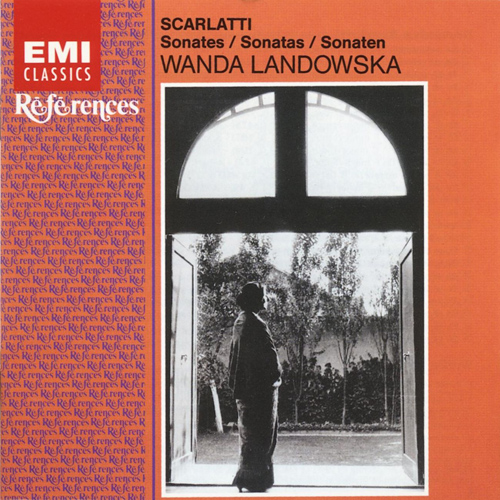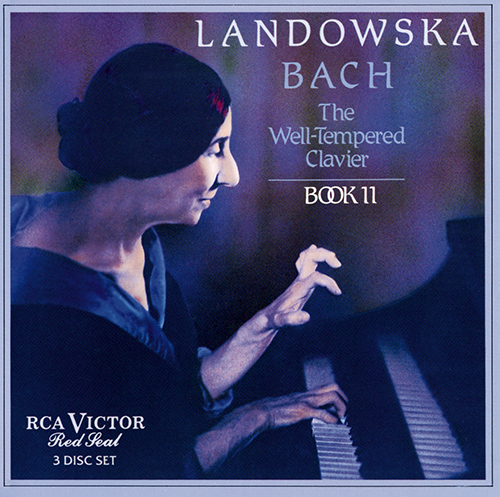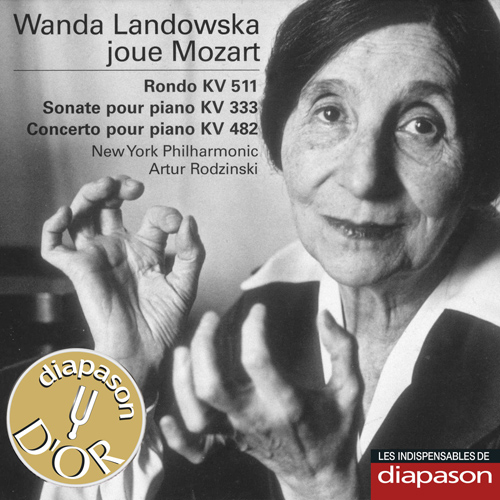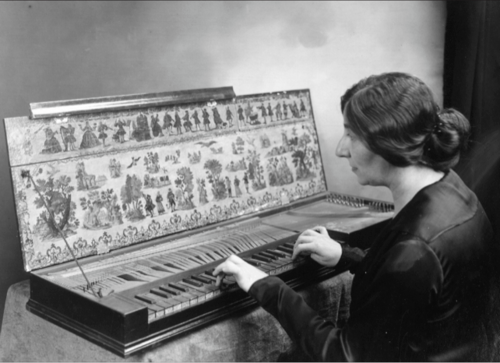Wanda Landowska, born in Warsaw on 5 July 1879, stands as a pivotal figure in the twentieth-century revival of early music. Her mastery of the harpsichord transformed the instrument from a historical artefact into a vibrant instrument for modern concert halls.

Wanda Landowska
Her artistry was rooted in an unparalleled synthesis of performance, scholarship, and innovation that animated composers like Bach, Couperin, and Scarlatti. Landowska did not merely recreate the music of the past but imbued it with a vitality that resonated with contemporary audiences.
Landowska’s legacy lies in her resolute challenge to prevailing musical orthodoxies, restoring the harpsichord to prominence and redefining early music as a living tradition rather than a mere historical curiosity. To celebrate her birthday on 5 July, let us feature some of her most iconic recordings and performances.
Wanda Landowska Performs Bach
Transformative Artistry

Wanda Landowska’s recordings of Domenico Scarlatti’s keyboard sonatas stand as a cornerstone of her legacy. Recorded primarily during her European sessions in the 1930s and later in the 1950s, her interpretations capture the Italian composer’s vibrant, virtuosic style with a blend of scholarly precision and infectious vitality.
Landowska’s approach is marked by crisp articulation, dynamic ornamentation, and a keen sense of rhythmic propulsion. She beautifully reveals the kaleidoscopic character of the pieces, ranging from fiery Iberian flourishes to moments of tender lyricism.
Critical reception was overwhelmingly positive, and her choice of a Pleyel harpsichord with its robust tonal palette was unanimously lauded. Gramophone praised her “electrifying clarity and zest,” noting that her Scarlatti sonatas “dance with a life that feels both authentic and revelatory.”
Domenico Scarlatti: Keyboard Sonata in D Major, K.430/L.463/P.463 (Wanda Landowska, harpsichord)
Domenico Scarlatti: Keyboard Sonata in D Minor, K.141/L.422/P.271 (Wanda Landowska, harpsichord)
Landowska’s Vision

Wanda Landowska undertook her recording project of Bach’s WTC primarily between 1950 and 1954. It represents a monumental achievement in her career, as she showcased Bach’s contrapuntal genius and her trailblazing advocacy for the harpsichord.
Landowska’s incisive touch and nuanced phrasing illuminate Bach’s intricate polyphony, while her command of the dynamic registers brings out the music’s architectural clarity and emotional resonance. Her interpretations, informed by rigorous study of Baroque performance practices, transcend mere historical recreation, offering a timeless vitality that reasserted the harpsichord’s relevance in modern concert culture.
A 1954 review in High Fidelity hailed her approach as “a revelation,” praising her “crystalline articulation and profound musicality” that made each prelude and fugue a miniature masterpiece. Musicologist Willi Apel, in his 1950s writings, commended Landowska’s ability to “marry scholarly insight with captivating expressiveness.” Landowska’s WTC continues to be celebrated for its role in reviving Bach’s keyboard legacy.
J.S. Bach: Well-Tempered Clavier, Book 2, BWV 870-893 (Wanda Landowska, harpsichord)
Elegant Mastery

Wanda Landowska’s recording of Mozart’s piano concertos exemplifies her remarkable versatility and her ability to adapt her historically informed approach to the fortepiano and early Classical repertoire.
Her recording showcases her delicate phrasing and transparent textures, which contrast sharply with heavier interpretations prevalent in her era. Landowska’s Mozart interpretation reveals a refined sense of balance that emphasises the composer’s lyrical elegance and structural clarity.
A 2000 Fanfare retrospective celebrated her recordings as “timeless for their poise and foresight,” underscoring their influence on modern Mozart interpretations. Critics also praised her “exquisite sensitivity to Mozart’s melodic contours, and musicologists described it as “a revelation of clarity and proportion.”
Wolfgang Amadeus Mozart: Piano Concerto No. 22 in E-flat Major, K. 482 (Wanda Landowska, piano; New York Philharmonic Orchestra; Artur Rodziński, cond.)
Groundbreaking Brilliance

Wanda Landowska
Wanda Landowska’s 1933 recording of Bach’s Goldberg Variations, performed on her custom Pleyel harpsichord in Paris’s Chopin Hall, stands as a historic milestone in the revival of early music and a testament to her interpretive genius. As the first artist to record this monumental work on the harpsichord, Landowska brought its intricate architecture and emotional depth to vivid life.
Her performance is characterised by meticulous clarity, rhythmic vitality, and a profound sensitivity to Bach’s contrapuntal structures, with each variation meticulously shaped to highlight its unique character. Landowska’s bold yet nuanced approach not only reasserted the harpsichord’s expressive potential but also redefined the Goldberg Variations as a cornerstone of the keyboard repertoire.
Wanda Landowska’s artistry and significance lie in her unparalleled ability to resurrect the harpsichord and early music, transforming them from historical relics into vibrant, living traditions. Her legacy endures as a bridge between past and present, inspiring generations of musicians and scholars to explore the nuances of Baroque and Classical music with fresh ears. Landowska’s bold, innovative, and deeply musical vision affirmed the timeless power of artistry to illuminate and transcend the boundaries of time.
For more of the best in classical music, sign up for our E-Newsletter
